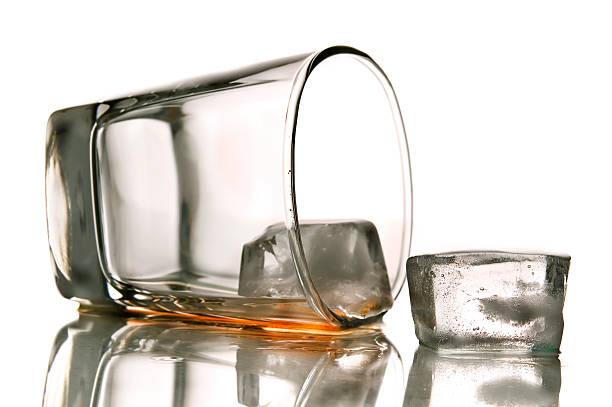The Three Stages of Alcoholism

One of the first symptoms of alcoholism is, ironically and tragically, an ability to increase alcohol intake and still function “normally.” It is ironic because most diseases cause immediate and obvious problems, not benefits, resulting in lowered functioning, not an improvement in functioning. But in the early stages of alcoholism, the alcoholic does not appear sick, in pain, or visibly abnormal. The early stage of alcoholism appears to be marked by the opposite of the disease. The alcoholic is “blessed” with a supernormal ability to tolerate alcohol and enjoy its euphoric and stimulating effects.
This improvement of functioning is tragic because the alcoholics or those around them have little or no warning of the deterioration that is inevitably to follow. Neither the early-stage alcoholics nor their friends and family have reason to suspect that the person is suffering from a progressive and often fatal disease. The disease is difficult to recognize or diagnose in its early stages because the symptoms are subtle and easily confused with normal reactions to alcohol. The early alcoholics do not complain, have no reason to visit a doctor because of their drinking, and do not suffer when they drink. They appear to be just like all other drinkers. They have hangovers when they overdrink, but so do their friends. They enjoy drinking, but so do their friends. They look forward to their evening cocktails, but so do their friends.
Moreover, alcohol is a socially acceptable drug without the stigma attached to narcotics. Drinking seems to be a normal social activity; it does not need to be hidden or involve shady dealers.
It would be difficult, if not impossible, to convince the alcoholic to stop drinking in the early stage. Why should they stop if they do not feel sick but feel better when they drink?
Middle Stage of Alcoholism
There is no actual cutoff line between the early and middle stages of alcoholism, but several characteristic features signal a new phase in the progression of the disease. As physiological changes gradually occur, the associated problems of drinking begin to outweigh the benefits. Pleasurable drinking for a “high”, a boost in feeling and performance from a relatively normal base, is replaced by a more urgent “drinking for medicine” to “cure” the pain and misery caused by the previous drinking. The basic cause of the increase in adverse effects is deterioration. Organs and systems that once welcomed large doses of alcohol and tolerated its toxic aftereffects are being damaged. Now, when the alcoholics stop drinking, their suffering is more severe and prolonged.
As the withdrawal symptoms intensify, the alcoholics relieve their physical and psychological discomfort with more alcohol, which inevitably makes the withdrawal symptoms worse. The alcoholic’s every action, mood and emotion is increasingly governed by their need to drink. This is called “craving”—a spiral of drinking where the alcoholics can no longer control their drinking consistently. Noticeable loss of control helps define the end of the middle stage and the beginning of the later, deteriorative stage of alcoholism.
Then, the middle stage of alcoholism can be characterized by three primary features: physical dependence as experienced in acute and protracted withdrawal symptoms; craving; and loss of control.
The Late, Deteriorative Stage of Alcoholism
At this stage, the alcoholic’s tolerance to alcohol is progressively lessening because of cell damage in the liver and central nervous system, and their withdrawal symptoms are increasing in severity. The late-stage alcoholics spend most of their time drinking, since otherwise, their agony is excruciating.
When most people think of alcoholics, they think of them as in this final stage of the disease: destitute, deathly ill, mentally confused and living only for alcohol. Yet their deterioration began long before this last stage, in most cases years before any physical damage became apparent. The decline started in the early and middle stages of the disease, when their cells adapted to alcohol, allowing it into the body in ever-larger doses. It progressed gradually as the cells became physically dependent on alcohol until finally, there were so many alterations in normal functioning that the disease could no longer remain hidden and emerged full-blown.
During the late stages of alcoholism, the alcoholic’s mental and physical health are seriously impacted. Damage to vital organs saps their physical strength; resistance to disease and infection is lowered; mental stability is shaken and precarious. Their disease so ravages the late-stage alcoholics that they cannot even understand that alcohol is destroying them. They are only aware that alcohol offers quick and miraculous relief from the constant agony, mental confusion, and emotional turmoil. Alcohol, their deadly poison, is also their necessary medicine.
If the alcoholics continue to drink, alcohol will kill them in one way or another. According to various studies, about one-third of alcoholic deaths are due to suicides or accidents such as drownings, fires from passing out with a lighted cigarette, head injuries, accidental poisoning or car crashes. Those who survive deathtraps are destroyed by massive damage to body organs and systems, such as heart failure, fatty liver, hepatitis, cirrhosis, respiratory tract diseases, cancer, pancreatitis and malnutrition.
If you are concerned about your or someone you love’s drinking, call +91 78930 03070 or 98490 69609 before it’s too late!